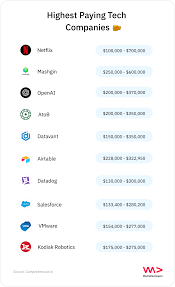Exploring the Role of a Spotify Software Engineer in Music Technology
The Role of a Spotify Software Engineer
Software engineers play a crucial role in the success of companies like Spotify, one of the leading music streaming platforms in the world. A Spotify software engineer is responsible for developing and maintaining the software systems that power the platform, ensuring a seamless and enjoyable user experience for millions of music lovers.
Responsibilities of a Spotify Software Engineer
As a software engineer at Spotify, one must possess strong technical skills and a deep understanding of software development principles. Some key responsibilities include:
- Designing and implementing scalable and reliable software solutions.
- Collaborating with cross-functional teams to deliver new features and enhancements.
- Optimizing performance and efficiency of existing systems.
- Ensuring code quality through testing and code reviews.
- Staying updated on industry trends and best practices in software engineering.
Skills Required
To excel as a Spotify software engineer, individuals need to have a strong foundation in computer science and programming. Some essential skills include:
- Proficiency in programming languages like Java, Python, or JavaScript.
- Experience with web development frameworks such as React or Angular.
- Knowledge of cloud computing platforms like AWS or Google Cloud.
- Problem-solving abilities and attention to detail.
- Excellent communication and teamwork skills.
Career Growth Opportunities
A career as a Spotify software engineer offers numerous opportunities for growth and advancement. Engineers have the chance to work on cutting-edge technologies, collaborate with talented colleagues from diverse backgrounds, and make a real impact on the music streaming industry.
If you are passionate about music, technology, and innovation, pursuing a career as a Spotify software engineer could be an exciting and rewarding path to follow.
9 Essential Tips to Succeed as a Spotify Software Engineer
- Develop strong programming skills in languages like Java, Python, or C++.
- Gain experience with software development tools and technologies commonly used at Spotify.
- Understand algorithms and data structures to solve complex problems efficiently.
- Collaborate effectively with team members on projects and code reviews.
- Stay updated on industry trends and best practices in software engineering.
- Practice good software design principles for scalable and maintainable code.
- Learn about backend systems, databases, and cloud computing for a well-rounded skill set.
- Communicate clearly and professionally with stakeholders to gather requirements and provide updates.
- Continuously improve your skills through learning opportunities like online courses or workshops.
Develop strong programming skills in languages like Java, Python, or C++.
To excel as a Spotify software engineer, it is essential to develop strong programming skills in languages like Java, Python, or C++. These languages are widely used in software development and are fundamental for building robust and efficient systems. By mastering these programming languages, engineers can effectively design and implement scalable solutions, collaborate with cross-functional teams, and stay at the forefront of innovation in the music streaming industry.
Gain experience with software development tools and technologies commonly used at Spotify.
To excel as a Spotify software engineer, it is essential to gain experience with software development tools and technologies commonly used at the company. Familiarity with tools such as Java, Python, React, and cloud computing platforms like AWS or Google Cloud can greatly enhance your capabilities as a software engineer at Spotify. By mastering these tools and technologies, you can effectively contribute to the development of innovative features and solutions that drive the success of the music streaming platform.
Understand algorithms and data structures to solve complex problems efficiently.
To excel as a Spotify software engineer, it is crucial to understand algorithms and data structures to solve complex problems efficiently. By having a strong grasp of these fundamental concepts, engineers can design optimized solutions that enhance the performance and scalability of Spotify’s software systems. Proficiency in algorithms and data structures enables engineers to tackle challenges effectively, streamline processes, and deliver innovative features that elevate the user experience on the platform.
Collaborate effectively with team members on projects and code reviews.
Collaborating effectively with team members on projects and code reviews is essential for a Spotify software engineer to ensure the development of high-quality software solutions. By working closely with colleagues, sharing ideas, providing constructive feedback, and reviewing each other’s code, engineers can improve the overall quality of the codebase and enhance the efficiency of the development process. Effective collaboration fosters creativity, encourages knowledge sharing, and promotes a culture of continuous learning and improvement within the team.
Stay updated on industry trends and best practices in software engineering.
Staying updated on industry trends and best practices in software engineering is crucial for Spotify software engineers to remain competitive and deliver top-notch solutions. By keeping abreast of the latest developments, such as emerging technologies and innovative methodologies, engineers can enhance their skills, stay relevant in a rapidly evolving field, and contribute to the continuous improvement of Spotify’s software systems. This proactive approach not only fosters professional growth but also ensures that engineers are well-equipped to tackle challenges effectively and deliver high-quality results for the platform’s users.
Practice good software design principles for scalable and maintainable code.
When working as a Spotify software engineer, it is crucial to practice good software design principles to ensure the development of scalable and maintainable code. By adhering to these principles, engineers can create code that can easily accommodate growth and changes over time. Scalable and maintainable code not only improves the performance of the platform but also enhances collaboration among team members and facilitates future updates and enhancements. Emphasizing sound software design principles is key to delivering high-quality solutions that meet the evolving needs of Spotify’s users.
Learn about backend systems, databases, and cloud computing for a well-rounded skill set.
To excel as a Spotify software engineer, it is essential to broaden your knowledge beyond just coding. By delving into backend systems, databases, and cloud computing, you can develop a well-rounded skill set that is crucial for designing and maintaining robust software solutions. Understanding how these components interact and impact each other will not only enhance your technical proficiency but also enable you to contribute effectively to the development and optimization of Spotify’s platform.
Communicate clearly and professionally with stakeholders to gather requirements and provide updates.
Effective communication is a vital aspect of being a successful Spotify software engineer. It is crucial to communicate clearly and professionally with stakeholders to gather requirements accurately and provide regular updates on project progress. By maintaining open lines of communication, software engineers can ensure that they are meeting stakeholders’ expectations, addressing any concerns promptly, and fostering a collaborative working environment that leads to successful project outcomes. Clear and transparent communication helps build trust and confidence among team members and stakeholders, ultimately contributing to the overall success of the software development process.
Continuously improve your skills through learning opportunities like online courses or workshops.
To excel as a Spotify software engineer, it is essential to continuously improve your skills through learning opportunities such as online courses or workshops. By staying updated on the latest technologies and industry trends, you can enhance your expertise and stay competitive in the fast-paced world of software development. Embracing lifelong learning not only expands your knowledge but also equips you with the tools needed to tackle new challenges and contribute meaningfully to the innovative work at Spotify.










